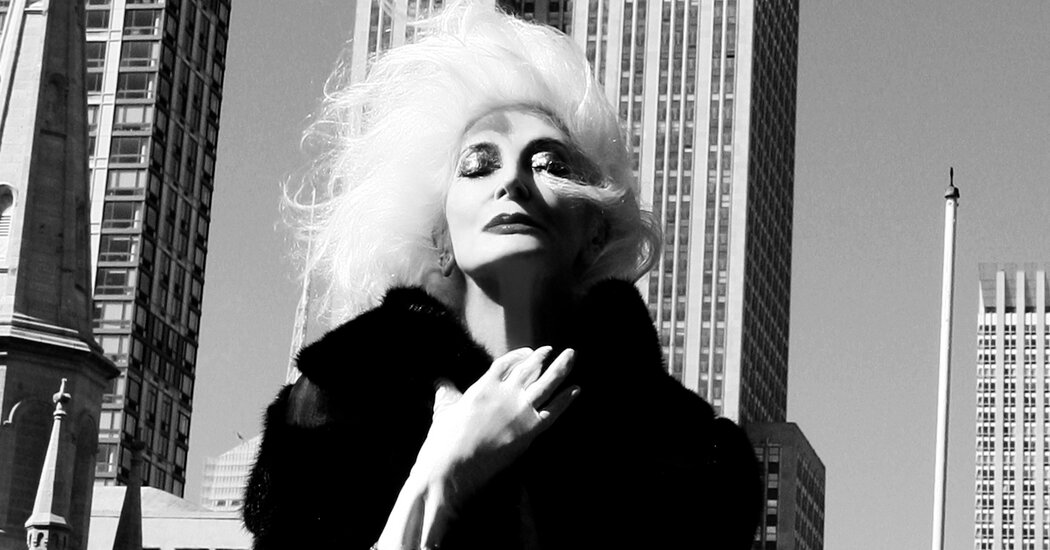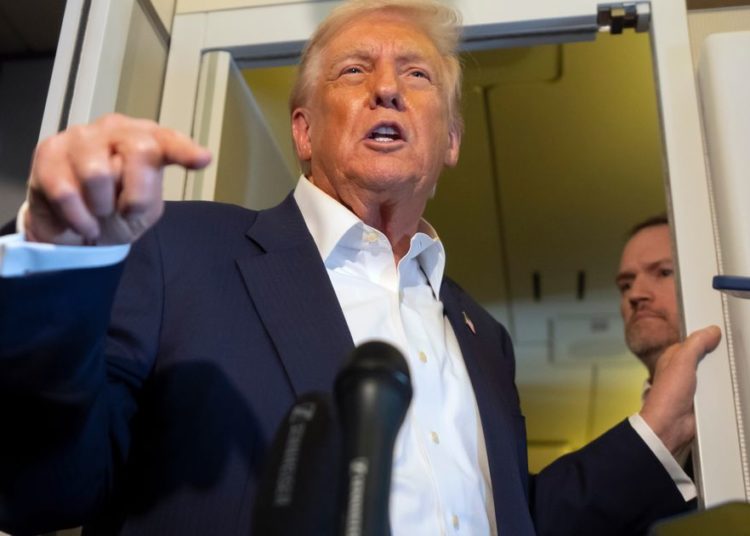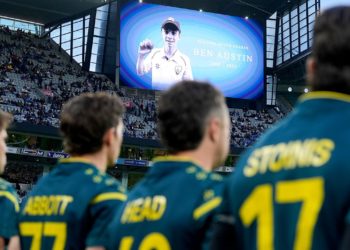Carmen Dell’Orefice was 15 when she appeared on her first Vogue cover, in 1946. Her latest appearance on a Vogue cover (its Czech edition) was in 2023, at age 91.
If Ms. Dell’Orefice, now 94, is not the oldest working model in the fashion industry, she is one of the most enduring. Her photos grace the pages of a new book, “Carmen Dell’Orefice: The Ultimate Role Model,” out Nov. 8 by the photographer Fadil Berisha, who has been working with Ms. Dell’Orefice for more than 30 years.
On Tuesday, she was the guest of honor at a cocktail party for the book, held at Mr. Berisha’s studio in Midtown Manhattan. When Ms. Dell’Orefice entered the room, as if on cue, guests raised their smartphones to snap pictures of her — and she instinctively angled her chin in return.
“I brought this scarf,” she called out to Mr. Berisha as she settled into a chair. “Should I wrap it around myself?”
“You look fabulous, Carmen,” he replied.
It was easy banter that one could picture the two exchanging countless times over the course of their decades-long relationship. Though Ms. Dell’Orefice has posed for Salvador Dalí, and has worked with great image makers like Irving Penn and Richard Avedon, she said in an interview that it was not until after she started working with Mr. Berisha that she felt truly seen.
“It was always hard for me with certain photographers, because I had to stay within the box of their instruction,” Ms. Dell’Orefice said. She added that Mr. Berisha, who has worked with brands like Rolex, Bulgari and Estée Lauder, “sees it all, knows what he wants and has accepted all of Carmen every time he gets me. He hasn’t wanted to change me, and it’s terrific.”
Modeling was never the dream for Ms. Dell’Orefice, whose career in front of the camera began before she could legally get behind the wheel of a car. She started at 14, almost by accident, to help her artist parents pay the bills, she said.
As a teen, she spent afternoons waiting in line for food rations during World War II. Ms. Dell’Orefice recalled having an above average height back then — she was 5-foot-9 — but weighing only 99 pounds. “Not by choice,” she said.
It was a look the fashion world wanted, even when she could barely afford to eat. Ms. Dell’Orefice’s swanlike posture on the December 1946 cover of American Vogue embodied a kind of elegance that has never totally gone out of style.
Her family’s apartment on Third Avenue in Manhattan did not have a telephone, she said, so Vogue would send someone up four flights of stairs to tell her she had booked a job.
In an industry that often sidelines models over 40, Ms. Dell’Orefice said her philosophy was to “keep on keeping on.” She focuses on who she is, not the model she was in her youth. That outlook has kept her working for the past 80 years, she said.
Does Ms. Dell’Orefice have any career regrets?
“Yes,” she said, after a laugh. “I’m sure I do, but my memory is so bad I can’t remember.”
Shop Talk
-
Louis Vuitton introduced a new line of handbags created by the Japanese artist Takashi Murakami, a longtime partner of the brand. Kaleidoscopic bags in the collection are embellished with Mr. Murakami’s signature cartoonish flowers and other fanciful details, like octopus tentacles. Prices start at $18,500.
-
American and British heritage collide in a new Levi’s collection developed with Barbour, which focuses on work wear, a specialty of both brands. Waxed denim jackets, along with trucker and chore coats, are among the line’s pieces, which start at $75.
-
The New York designer Anna Sui, whose feminine punk aesthetic has endured since her namesake label’s 1990s heyday, just released a collection for Old Navy. The mall brand’s first designer collaboration, it includes faux-fur-trimmed Penny Lane coats, floral dresses and patterned jeans. Prices start at $19.99.
-
Following a now familiar playbook in fashion, True Religion, known for its Y2K-era twisted jeans, has turned to the sports world for a new holiday campaign. The ads star a roster of WAGs — wives and girlfriends of athletes — that includes Ciara, the singer who is married to the New York Giants quarterback Russell Wilson.
-
The piercing chain Studs arrived in Las Vegas this week, opening a “chapel” at the Venetian resort, with services including group piercings.
Chatting With … a Podcaster Who Has a Lot to Say About Clothes
Fans of Avery Trufelman’s “Articles of Interest” podcast know that Ms. Trufelman, 34, is a sharp-eyed observer of clothing and its cultural undercurrents. Delving into topics like Ivy League style, clergy vestments and pockets, she helps listeners find meaning in the fabrics, silhouettes and garments that have shaped American life.
This month, she introduced “Gear,” a new seven-episode series that looks at how military uniforms have influenced everyday clothes — particularly outdoor apparel, a genre now worn as much for function as for fashion, which she has explored before. In an interview that has been edited and condensed, Ms. Trufelman discussed the ways American military style has invaded wardrobes domestically and abroad.
The U. S. military effectively introduced the modern sizing scale: small, medium, large. How has that shaped the way Americans think about their bodies?
So much of what we think of as “average sizing” comes from military measurements. They determined what was considered normal for decades because it’s very hard to get large measurements of lots of different body parts from normal people.
It was often men’s sizing being adapted for women in the military, who were already insecure and then had to wear clothes that were frumpy. One veteran told me that not even Demi Moore could make women’s military clothes look good in “G.I. Jane.”
Camouflage, a prominent motif in U.S. Army uniforms, is now widely used by other federal forces, foreign militaries and fashion brands. What do you make of that proliferation?
The army’s camouflage pattern was essentially a fashion trend that others picked up. It’s fascinating and a reminder that fashion can have real-world consequences, even in warfare. In conflicts, soldiers on opposing sides can look almost identical, which is dangerous.
The Berry Amendment of 1941 mandates that all attire for the U.S. military be made domestically. How is this playing out in the American manufacturing industry today?
When you hear “military contracting,” you think of piles of dark money. There are a lot of outdoor companies — really prominent ones — that manufacture for the military and for special operators but kind of hide it, or don’t talk about it, or have little shell companies.
I asked Outdoor Research, an outdoor company, why they do it. They told me it is to keep the factory. Right now, the Berry Amendment is a huge factor in what keeps American manufacturing alive. It’s often tiny domestic companies like cowboy-boot makers or the military.
Yola Mzizi is a reporter for the Styles section and a member of the 2025-2026 Times Fellowship class, a program for journalists early in their careers.
The post The 94-Year-Old Model Who Isn’t Done Yet appeared first on New York Times.




